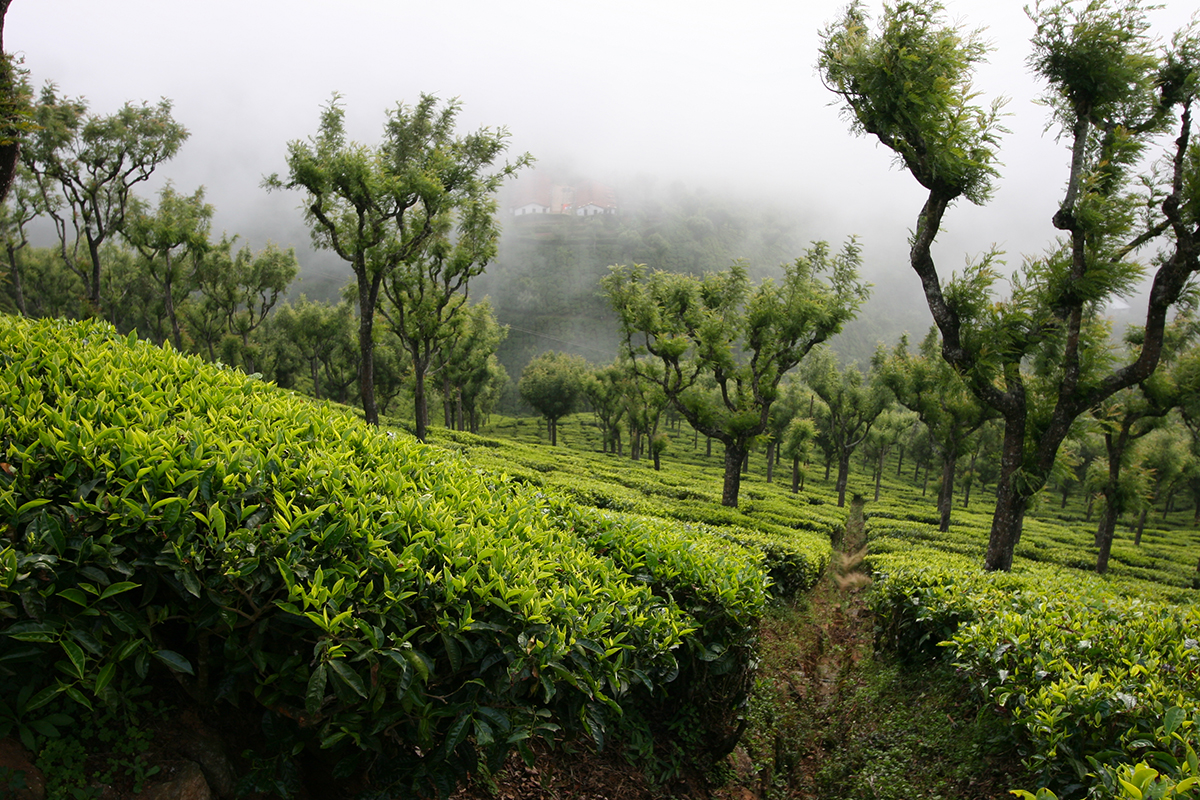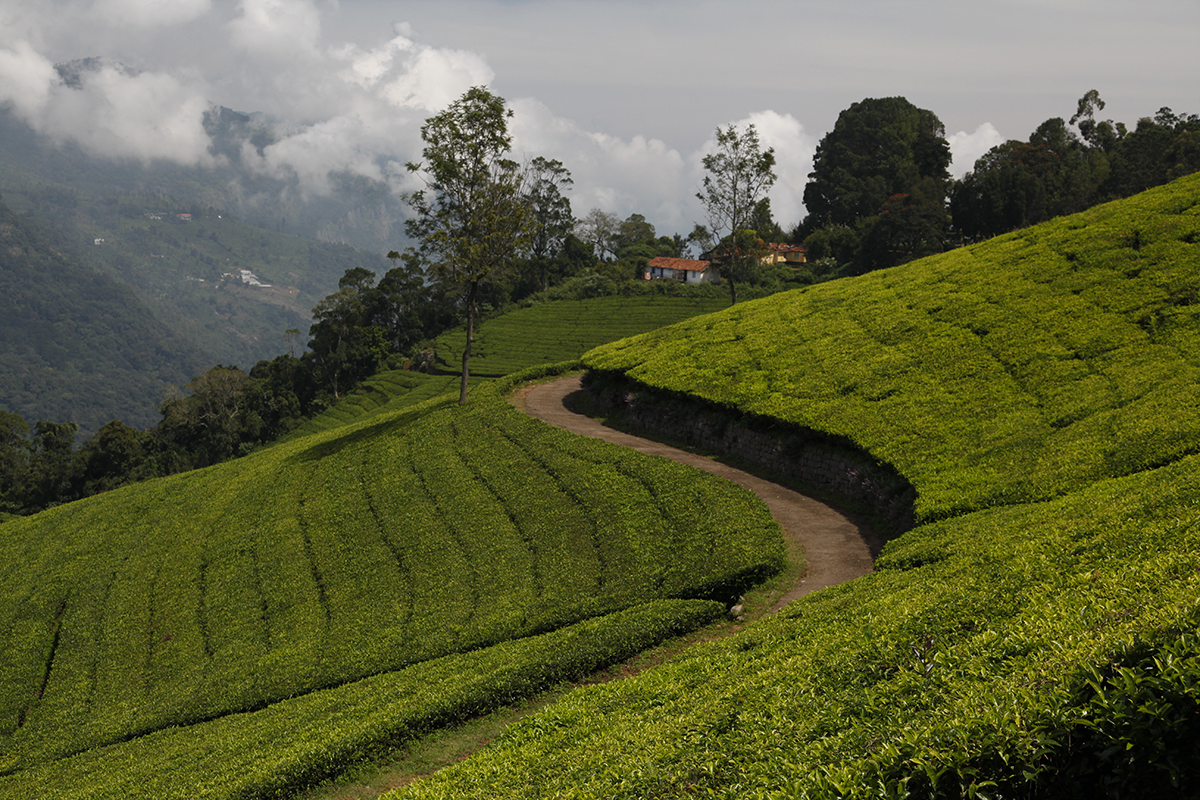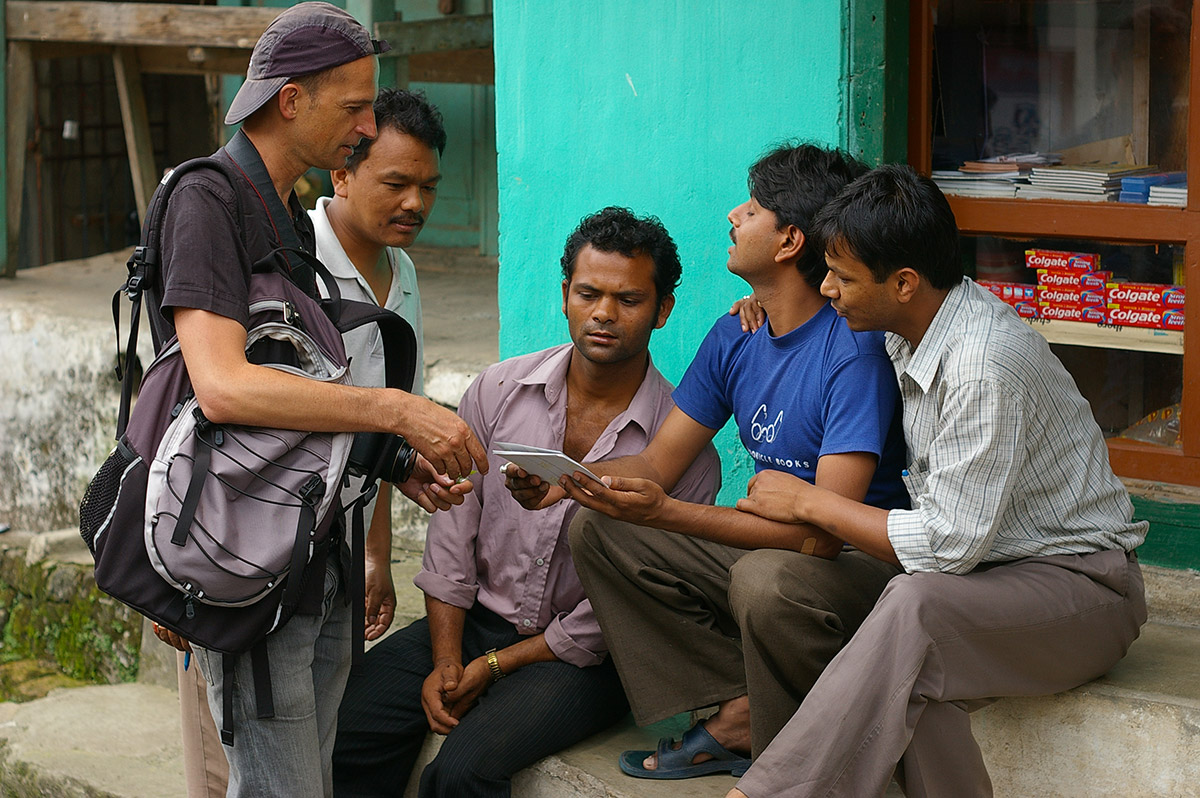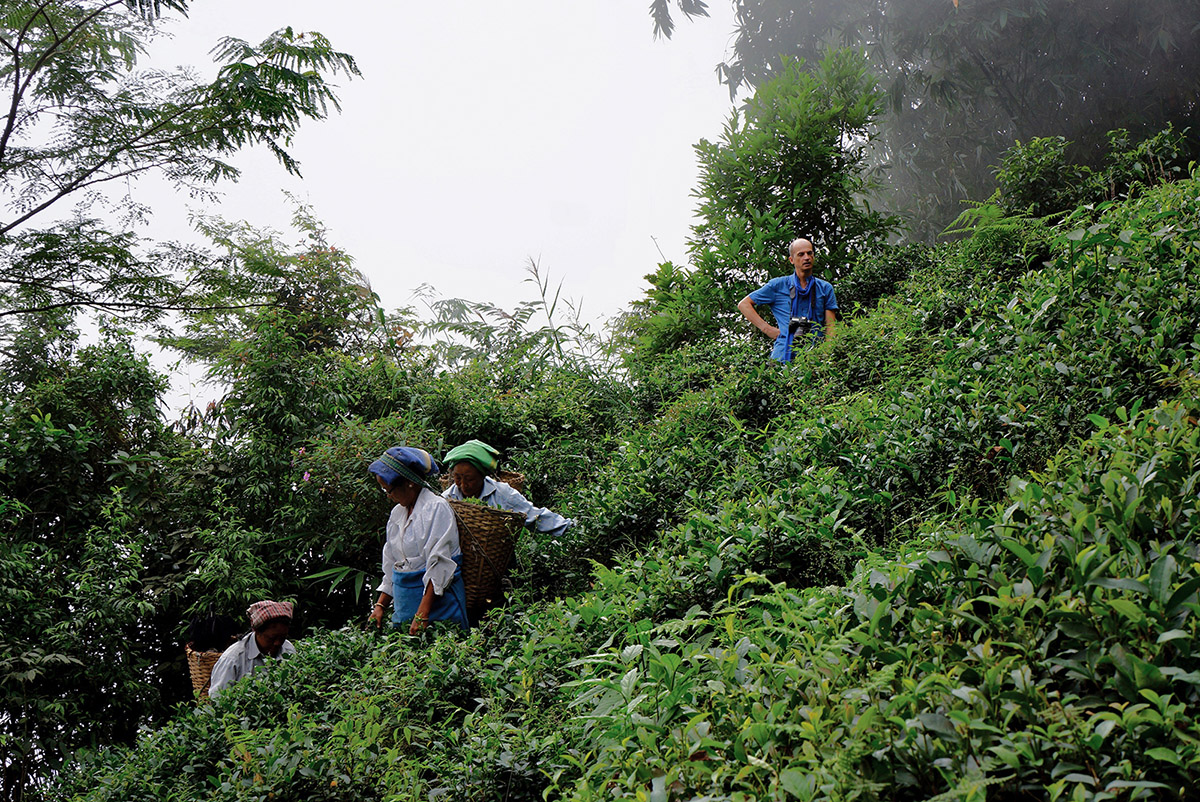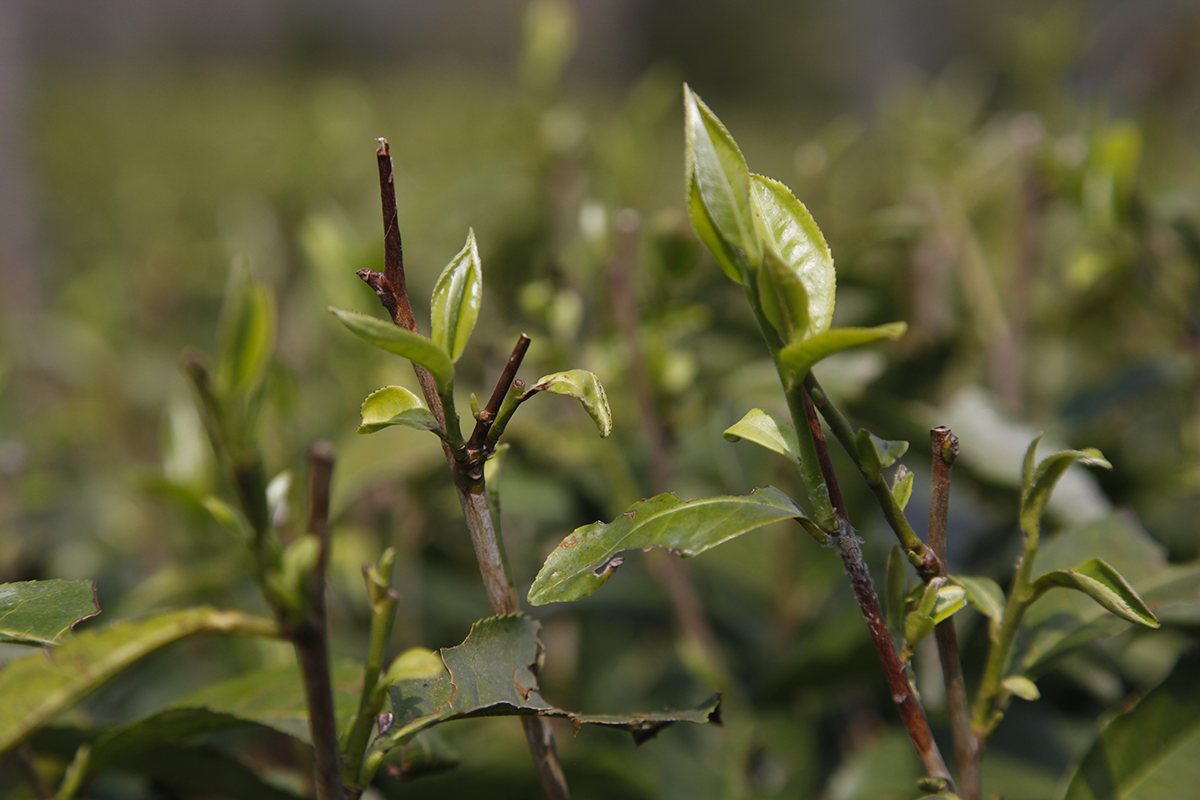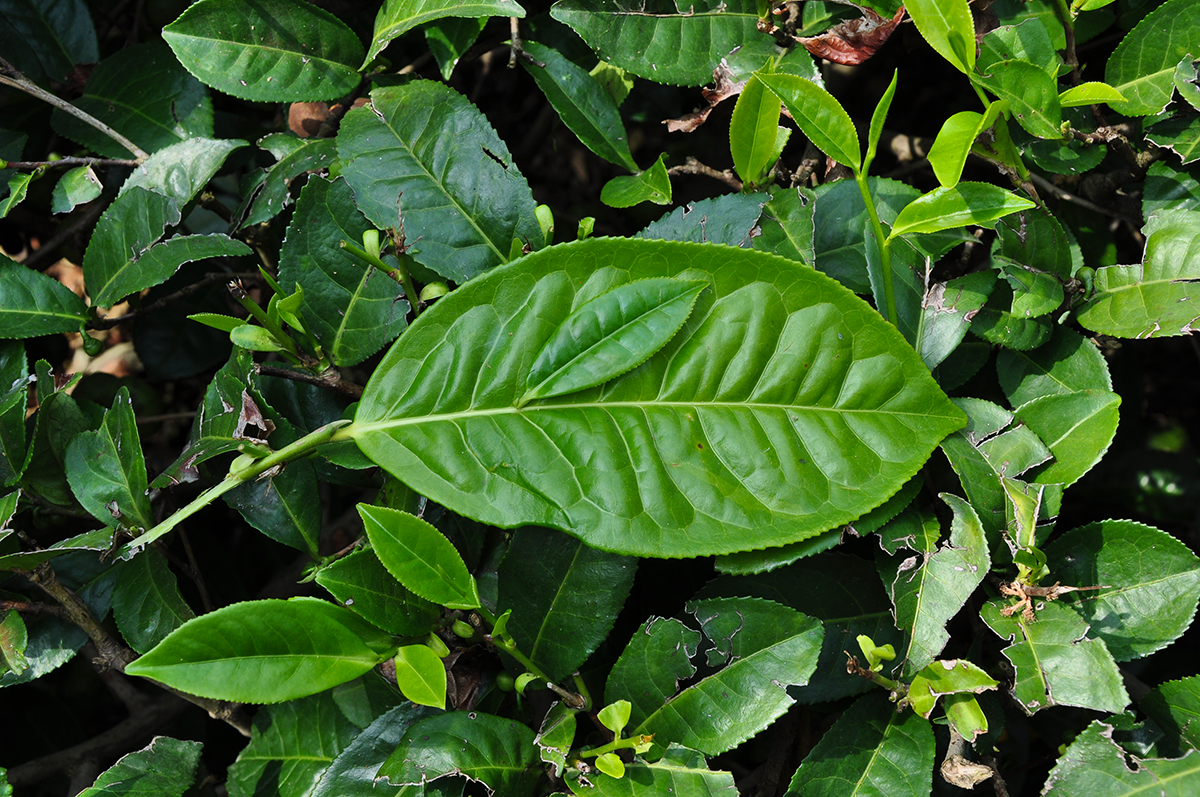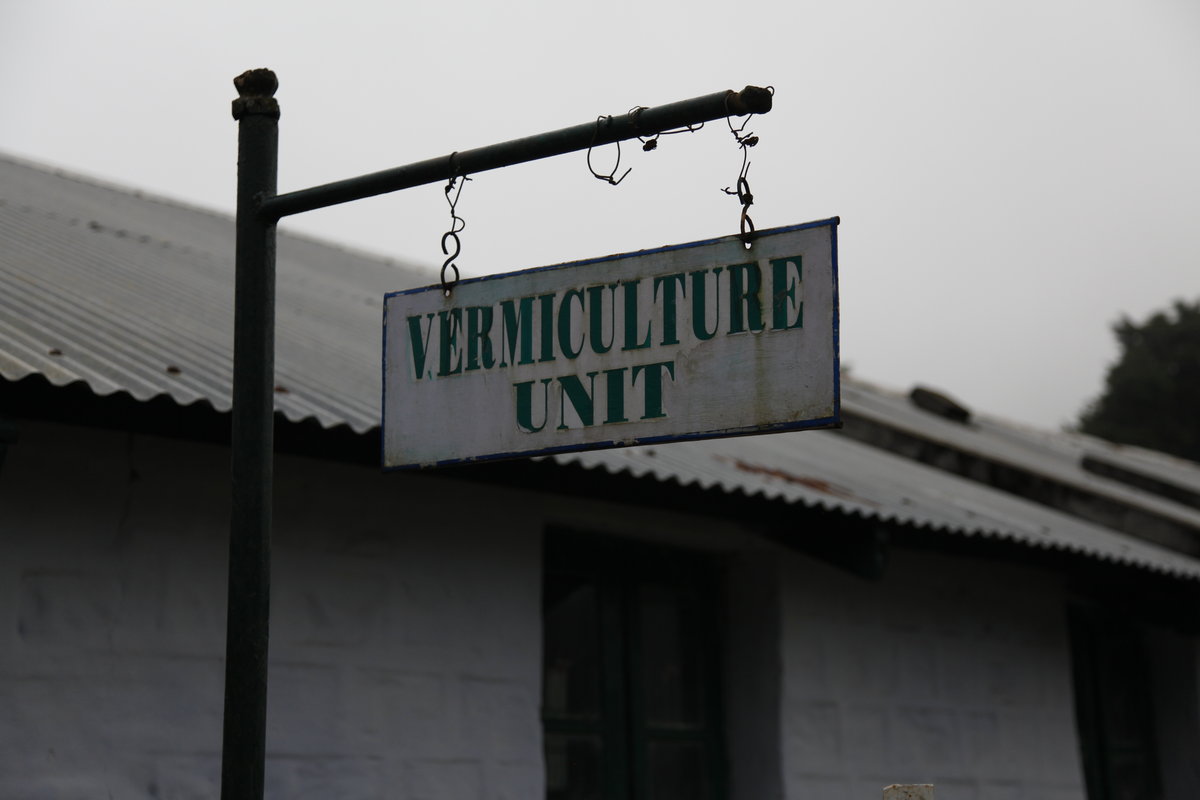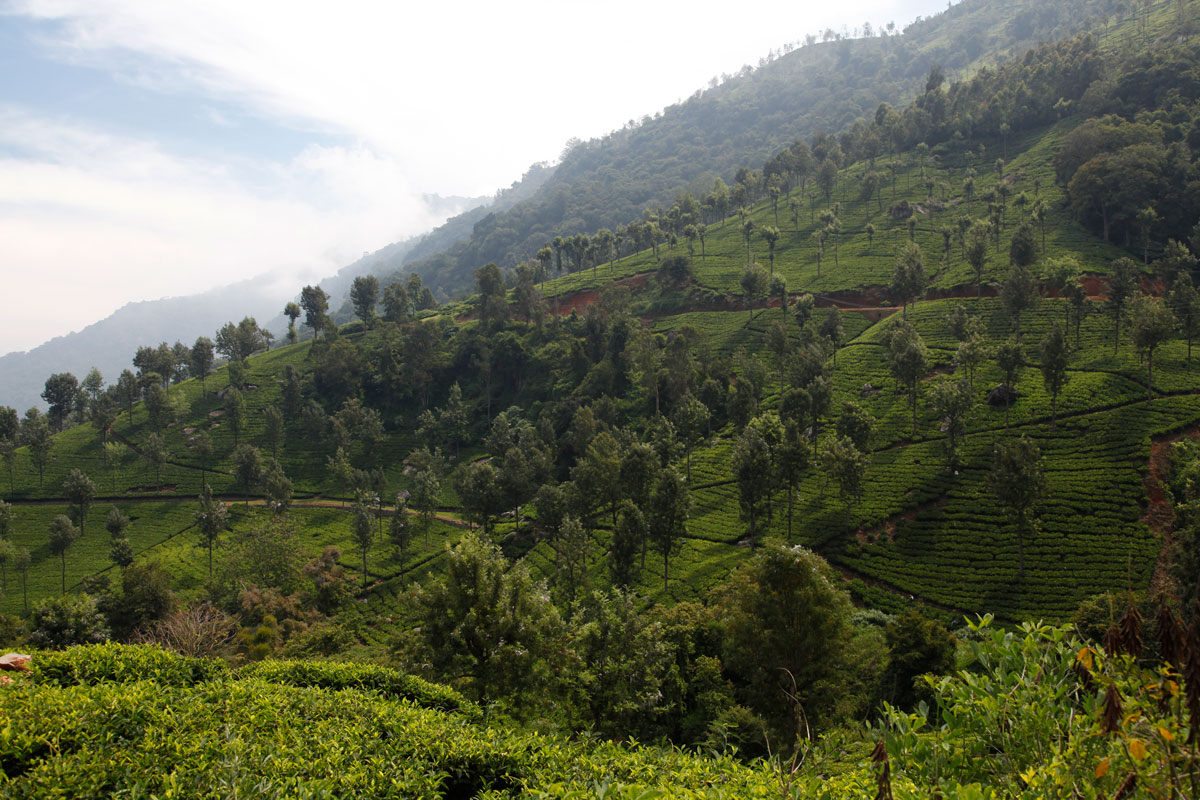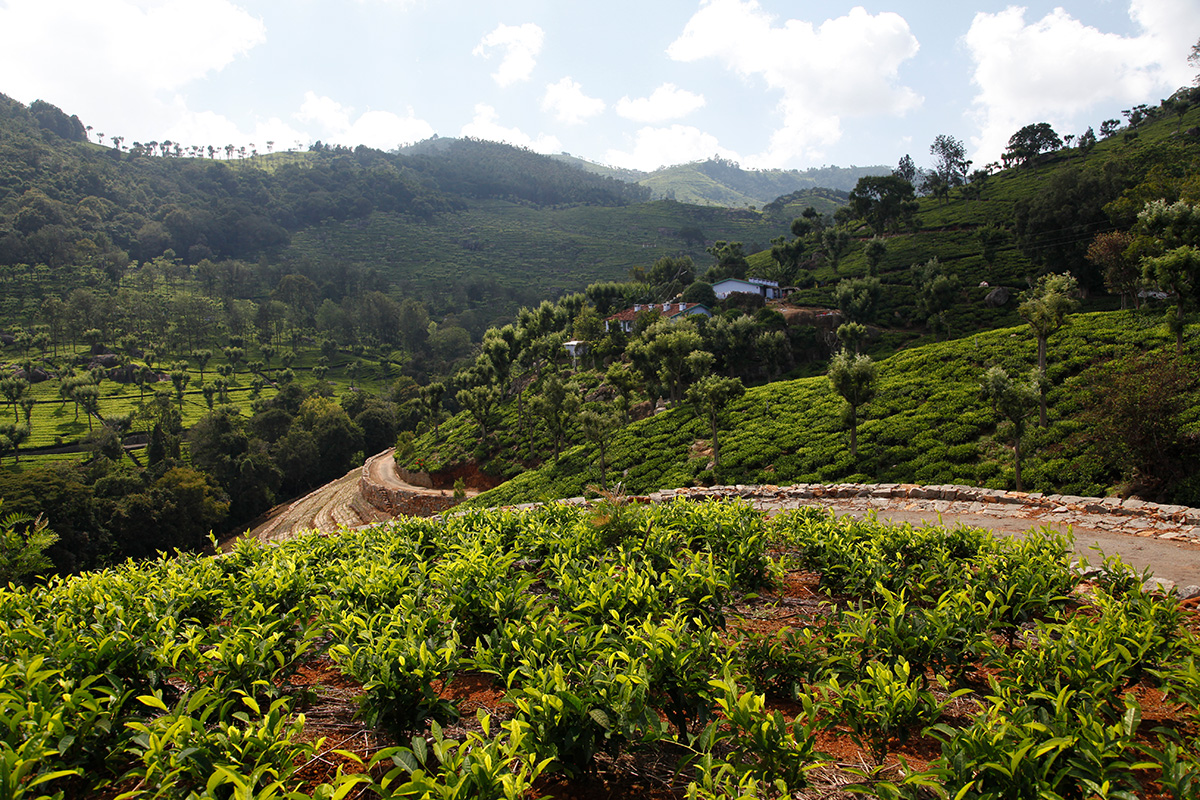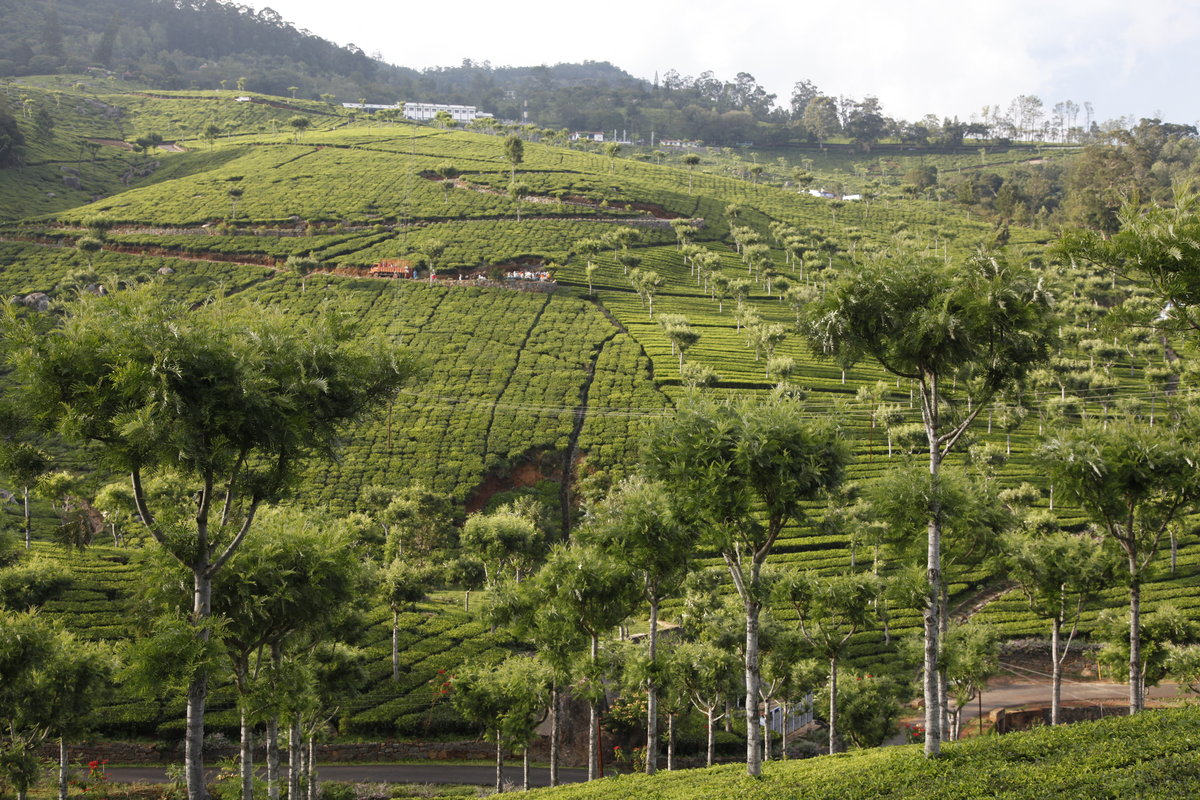Tea plants are like you. In hot weather, they appreciate a refreshing mist. The tea plant belongs to the Camellia family. These plants like water, as long as it doesn’t sit around their roots. This means that tea plants feel at home on sloping ground, preferably in mountainous regions with a warm, humid climate. On flat ground, they require drainage.
India
Progressing slowly
For me, tea is more than a goal, it’s a path. I can’t imagine ever knowing everything there is to know about tea. A lifetime isn’t enough. Tea is a path: what’s important to me isn’t arriving, but progressing. Progressing in my knowledge of the plant, in my knowledge of the art of processing the leaves, progressing on my journey through the tea fields to reach the villages where the communities live. Progressing slowly but surely, in a world where everyone is rushing.
When you travel alone it’s easier to meet people
I mostly travel alone. I depart alone, I return alone. This solitude encourages me to approach others. I’m more easily accepted by them, to be among them. Alone, you open up to others. We all need other people. Without a travel companion, you make more of an effort to adopt the culture of the people you meet. Alone, you’re more vulnerable, more permeable, more receptive. And that’s a good thing, because I travel to listen.
An unusual season
The Darjeeling season is going to be a strange one. The really amazing teas are priced out of reach (30% to 50% higher than in previous years) to compensate, the planters say, for the losses they sustained during the 105 days of strikes last year. So far I’ve bought, on the best possible terms, the following: Mission Hill DJ4 SFTGFOP1 Clonal, Puttabong DJ14 SFTGFOP1 Clonal Exotic, Puttabong DJ12 SFTGFOP1 Clonal Queen, Orange Valley DJ5 SFTGFOP1 cultivar China, Balasun DJ6 SFTGFOP1 Himalayan Mystic, and Rohini DJ15 FTGFOP1 Exotic White, all exclusive. They’re of a remarkable quality and will delight enthusiasts. For those wanting first-flush Darjeelings at lower prices, you’ll have to wait. Firstly, the only teas that are cheap are very poor quality, and secondly, even the mediocre teas are priced high, or very high. They’re absolutely not worth it. To sum up, this year requires more vigilance than usual.
For fans of Himalayan teas who aren’t focused on Darjeeling, and who are looking for good deals, why not wait for the Nepalese teas? They’ll be ready soon and often represent excellent value for money.
Timid shoots
In Darjeeling, the years go by, and each one is different. In a little over 30 years, I’ve never known anything like the current situation. To remind you, a strike lasting 105 days prevented any work from taking place on the region’s 87 plantations between June and October. When the separatists finally removed the blockades, it was time for Durga Puja – the local version of Christmas. After the plantations had been abandoned for months, the workers then had to set about taming the jungle. The problem was that some of them had fled the conflict to find work in the valleys. And that’s where we are now: the tea plants were pruned very late – some at the end of December – which means that we’re still waiting for the Darjeeling spring harvest. On Wednesday 14 March, a few rare and timid shoots appeared on the tea plants (photo). Of course, so-called first-flush Darjeelings have been on the market for more than a month: that’s the magic of spring Darjeelings, they’re being sold before they’ve even been harvested. This is because some low-altitude plantations, which benefit from a warm climate and irrigation systems, can produce small quantities of tea during the winter. They falsely call them spring teas. Which is sad, as they are nothing like the leaves harvested from the plants in which the sap rises slowly, and which produce the unique tea that has made Darjeeling famous.
The sinensis and assamica varieties
If you enjoy tea, you will probably know that there are two main varieties of Camellia sinensis used to make tea: Camellia sinensis var. sinensis, and Camellia sinensis var. assamica. Rather than getting bogged down in the Latin, here is a more practical explanation. The large-leaf teas come from the assamica strain, while the small-leaf teas – which have incomparable aromas and a hardiness that allows them to adapt to harsher climates – belong to the sinensis strain. It is self-explanatory that a producer looking for quantity over quality is likely to favour one over the other.
I would like to thank Laurence, manager of the Palais des Thés store on Rue du Commerce in Paris, for this photo she took while we were visiting a research centre in Northern India.
(photo: Laurence Jouanno)
Our friends the earthworms
Tea plantations that use organic methods avoid all conventional pesticides and fungicides. They limit the spread of undesirable elements through the use of natural predators or repellents. And to enrich the soil, to make up for the nutrients that the tea plants take up, especially in intensive farming, they need to add a significant amount of organic matter. Organic compost can be bought in, or even better, produced on the plantation. One way of doing this is using vermiculture, a fairly common practice in India. Millions of earthworms are fed cattle manure mixed with chopped up banana leaves, for example. The worms produce excrement, and it is this excrement that is deposited around the base of each tea plant.
Mountains in Southern India
When you think of Southern India, you think of colourful temples, ancient spice trading posts, beaches lined with palm trees, boats gliding along complex networks of canals and backwaters, and luxuriant gardens. Southern India is less well-known for its mountains. Yet what are called the Ghats, literally “steps”, peak at more than 2,000 metres above sea level. This altitude and climate is well suited to tea plants.
Thanks to you
I visit many places I never want to leave, where I’m surrounded by dreamy landscapes and amazing nature, where I meet such kind and lovely people, but I always come back. I often come back with delicious teas, that’s my job, and with these photos I share with you. I love to share them with you as it’s a way of prolonging my travels, days and weeks later. I show you my photos here, I write a few lines of explanation, and in doing so, I’m transported. Thanks to you I return, I’m back in the mountains I travelled through a little too quickly, and now I have time to contemplate them, here, in your company.
Holding the soil in place
Farming methods change over time. Tea bushes sometimes used to be planted following the slope of the ground, resulting in vertical lines like those visible on the left of this photo. Today, young bushes are planted in horizontal rows, to reduce soil erosion. In heavy rain, the water runs off more slowly and the tea bushes hold the soil in place.

